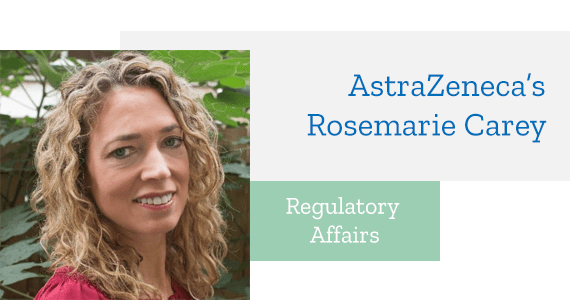
An Interview with Rosemarie Carey, Joe Shields and Mark Bard | March 2019
It’s conference season now… and we are pleased to bring you a quick excerpt from a recent DHC appearance. DHC’s co-founder, Mark Bard, had the opportunity to join Rosemarie Carey, Director of Promotional Regulatory Affairs, AstraZeneca and Joe Shields, Co-Founder of Health Accelerators for a discussion at DIA’s annual Advertising and Promotion Regulatory Affairs Conference in late February.
Digital Health Coalition: How have the drug information needs of health professionals, patients, and caregivers changed over the past 10 years?
 Mark Bard: The decade from 2000 to 2010 was a decade of massive growth in the amount of health and drug information online overall. Over the decade from 2010 to present, the critical drivers have been the integration and reliance on mobile (devices) and social media platforms. Information became much more accessible, on demand, and on the move – as well as at the point of care while speaking with a physician. Physicians have been using phones for decades and their use of smartphones over the past decade has only increased – including professional use after hours. Social media – mostly for consumers – has made it much easier for consumer to find, share, and curate relevant user-generated content (and experiences). While the total number of consumers and physicians using health and drug information has not radically increased over the past 10 years – the integration, reliance, and power of that information has increased many times over and translates into a major impact throughout the health system.
Mark Bard: The decade from 2000 to 2010 was a decade of massive growth in the amount of health and drug information online overall. Over the decade from 2010 to present, the critical drivers have been the integration and reliance on mobile (devices) and social media platforms. Information became much more accessible, on demand, and on the move – as well as at the point of care while speaking with a physician. Physicians have been using phones for decades and their use of smartphones over the past decade has only increased – including professional use after hours. Social media – mostly for consumers – has made it much easier for consumer to find, share, and curate relevant user-generated content (and experiences). While the total number of consumers and physicians using health and drug information has not radically increased over the past 10 years – the integration, reliance, and power of that information has increased many times over and translates into a major impact throughout the health system.
DHC: Specific to consumers, what industry and macro trends are driving the future need for digital health services and content?
Mark Bard: Consumers expect a connected physician and a connected practice. Although we are still forced to complete 10 paper pages of intake forms at the office, most patients now consider email with the practice, lab results online, and the ability to schedule appointments through text and secure messaging as “normal” today. As they transition their communication and relationship with their physician to digital, they expect all other parts of the health system to deliver in the digital realm as well. They are connected with their health plan – we manage through the portal. They are connected with their pharmacy – we get a text when the Rx is ready. They access drug information online – but their digital connectivity with pharma remains limited for many patients. Pharma companies must continue to ask the questions … What customer experience do we “owe” consumers? Are we delivering the content and education through the devices, channels, and formats they desire? For many consumers, there remains a gap between what they expect – and what they get online from pharmaceutical companies.
DHC: Why should pharma companies (and brands) seek to provide more than basic product information?
 Joe Shields: Pharma companies must continue to be the most credible and comprehensive sources of information for the lifesaving products that they develop and market. And while this may meet basic regulatory requirements, it’s not enough for today’s healthcare customers. Historically, pharma companies only competed with other pharma companies—but today that’s no longer the case. Many new healthcare entrants are focused on outcomes and other aspects of care beyond pills, injections and infusions. In order for pharmas to survive and thrive, they must proactively partner with these new entrants to provide the outcomes and experiences – as well as the science — demanded by customers and other stakeholders.
Joe Shields: Pharma companies must continue to be the most credible and comprehensive sources of information for the lifesaving products that they develop and market. And while this may meet basic regulatory requirements, it’s not enough for today’s healthcare customers. Historically, pharma companies only competed with other pharma companies—but today that’s no longer the case. Many new healthcare entrants are focused on outcomes and other aspects of care beyond pills, injections and infusions. In order for pharmas to survive and thrive, they must proactively partner with these new entrants to provide the outcomes and experiences – as well as the science — demanded by customers and other stakeholders.
DHC: Why do you think pharma is not meeting the expectations of their customers today?
Joe Shields: Biopharma companies are not meeting the expectations of their external customers—mainly HCPs and patients—because many of their “internal customers” such as brand marketers still subscribe to an antiquated reach and frequency model solely for product promotion. While the expectations of customers have changed rapidly and dramatically due to the Internet, smartphones, companies like Amazon and higher out-of-pocket expenses, pharma’s approach, technology infrastructure, tactics and tools have evolved at a decidedly slower pace. MLR review processes have also been slow to adapt to the changes that resulted when brand teams moved from designing brochures to designing experiences.
DHC: As pharma companies embrace adapting to the demands of the digital customer, what is the role of people in the process to keep up (from the MLR point of view)?
 Rosemarie Carey: It’s important for MLR teams to be flexible. Due to the ongoing updates to technology platforms, there will always be slight nuances that should be accounted for. Marketing teams should consider placing times, date, or even names in brackets to denote variable content to their MLR teams, which allow for flexibility in deploying dynamic content.
Rosemarie Carey: It’s important for MLR teams to be flexible. Due to the ongoing updates to technology platforms, there will always be slight nuances that should be accounted for. Marketing teams should consider placing times, date, or even names in brackets to denote variable content to their MLR teams, which allow for flexibility in deploying dynamic content.
DHC: In some cases, the teams reviewing a technology application may not have experience with it – or a grasp of how it used. How can review teams keep up with the market?
Rosemarie Carey: As a regulator, it is important to stay up-to-date with the latest technology trends. It is not enough to apply a 2D print philosophy to a dynamic, digital app. If you are unfamiliar with the nuances of the platform, just ask your marketer or media agency for help. If you don’t currently have social accounts, get them now (use an alias if you have privacy concerns).
You can find Mark Bard on LinkedIN here.
You can find Joe Shields on LinkedIN here.
You can find Rosemarie Carey on LinkedIN here.
